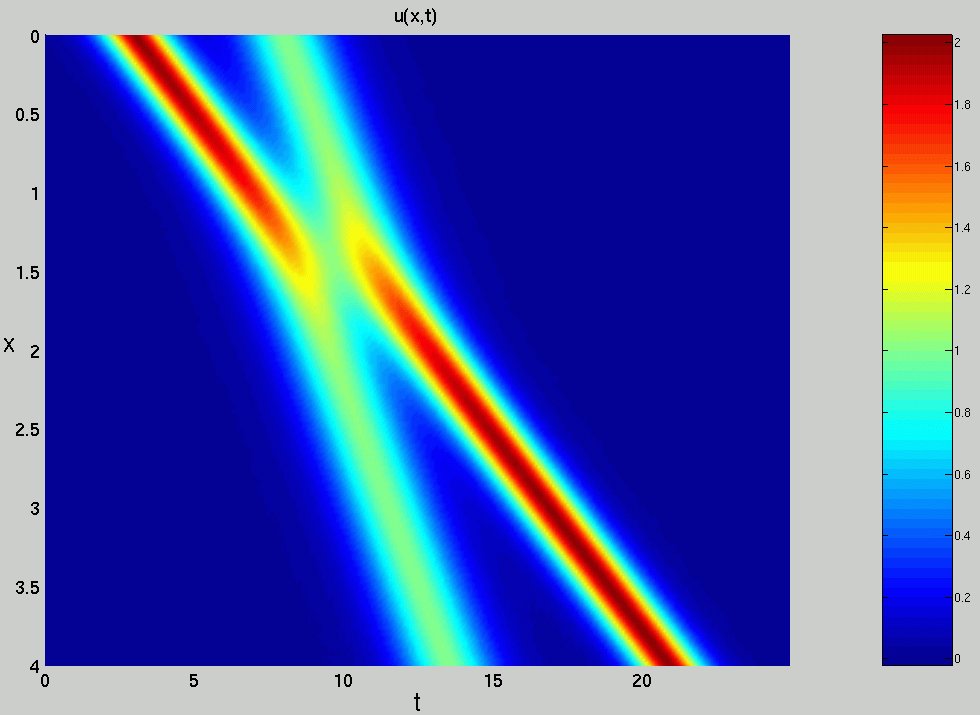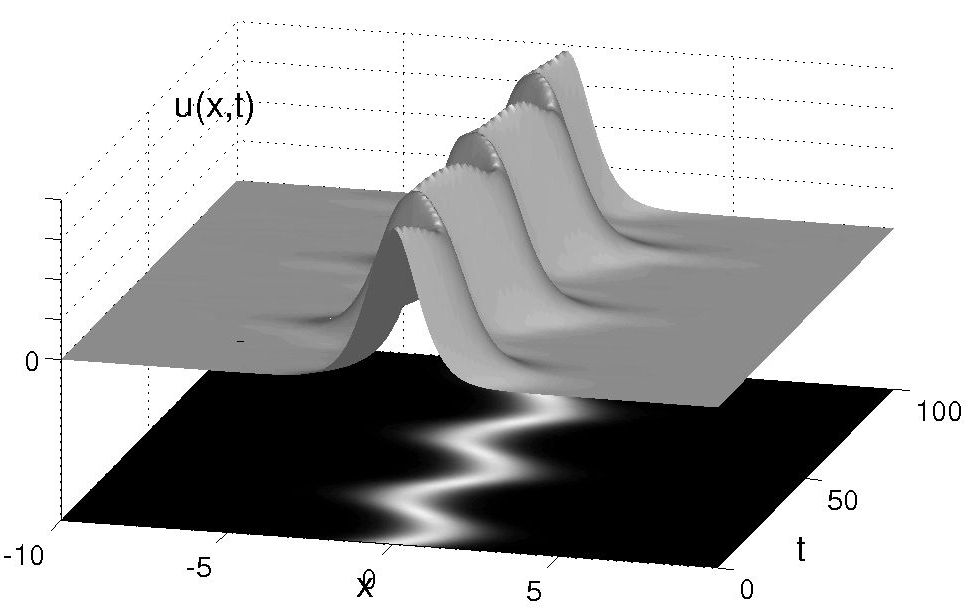| Instructors: |
Prof. Ricardo Carretero
(rcarretero@mail.sdsu.edu)
Prof. Andrea Bertozzi (bertozzi@math.ucla.edu) |
|
| TA: | Julia Rossi (julia.rossi@gmail.com) | |
| Lectures: |
|
|
Description: |
|
| Reference Material:
You do not need to buy any book(s) as I will be distributing a set of notes for the course.
|
|
Soliton of condensed matter (Bose- Einstein condensate) trapped in
a magnetic trap. The soliton behaves like a quasi-particle that
oscillates left-to-right following harmonic oscillations described
by Newton s Second Law of motion.
|

